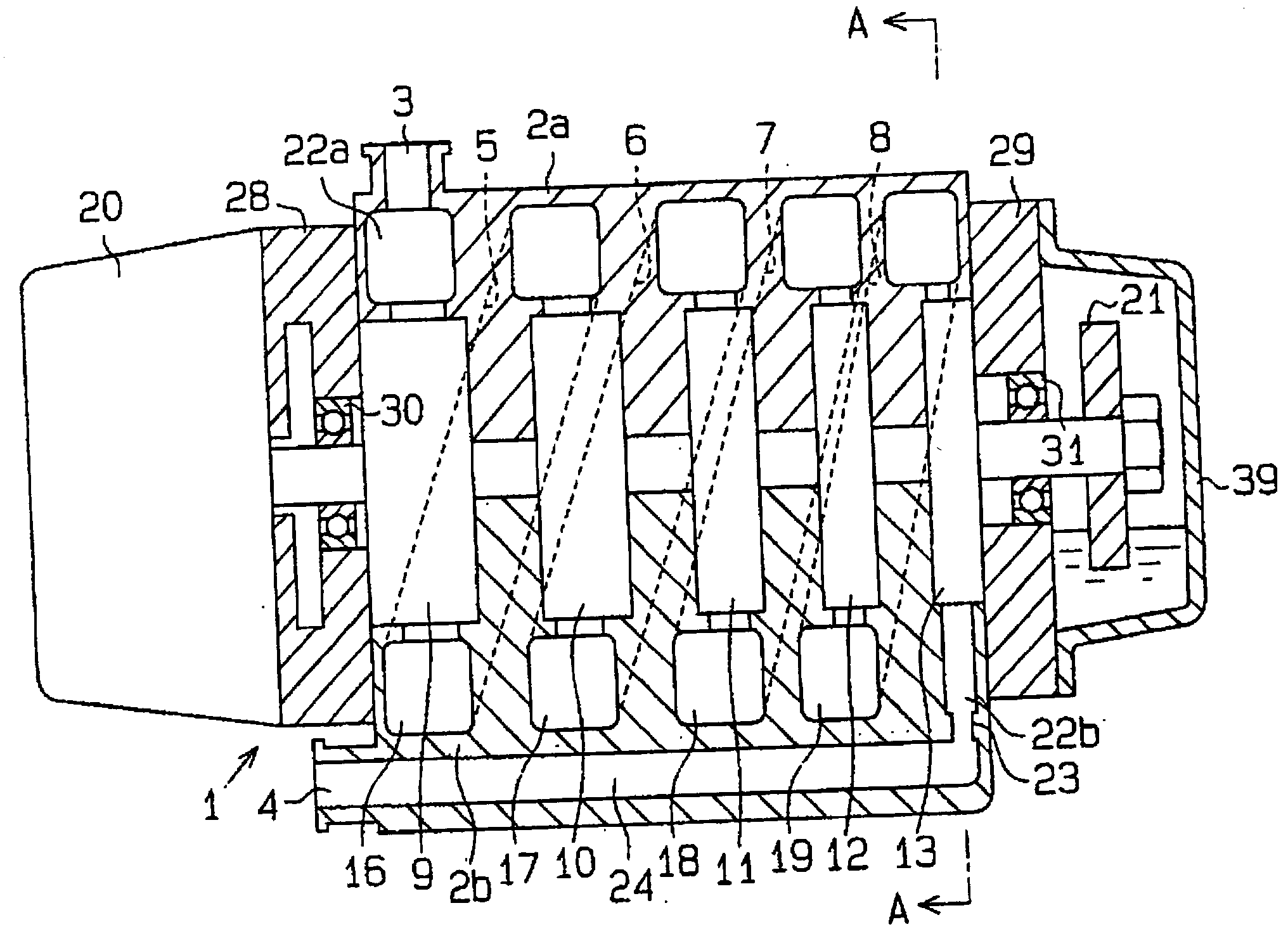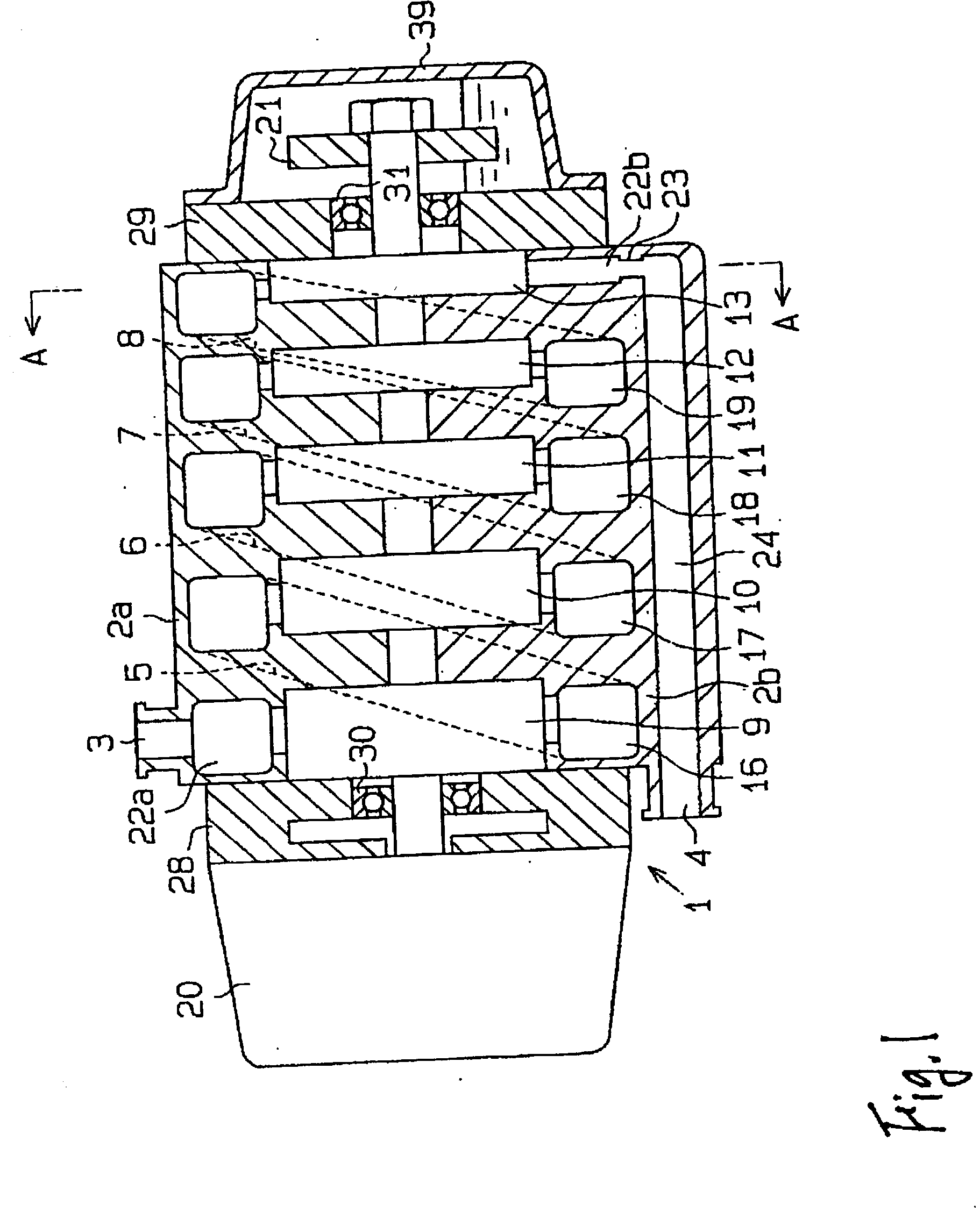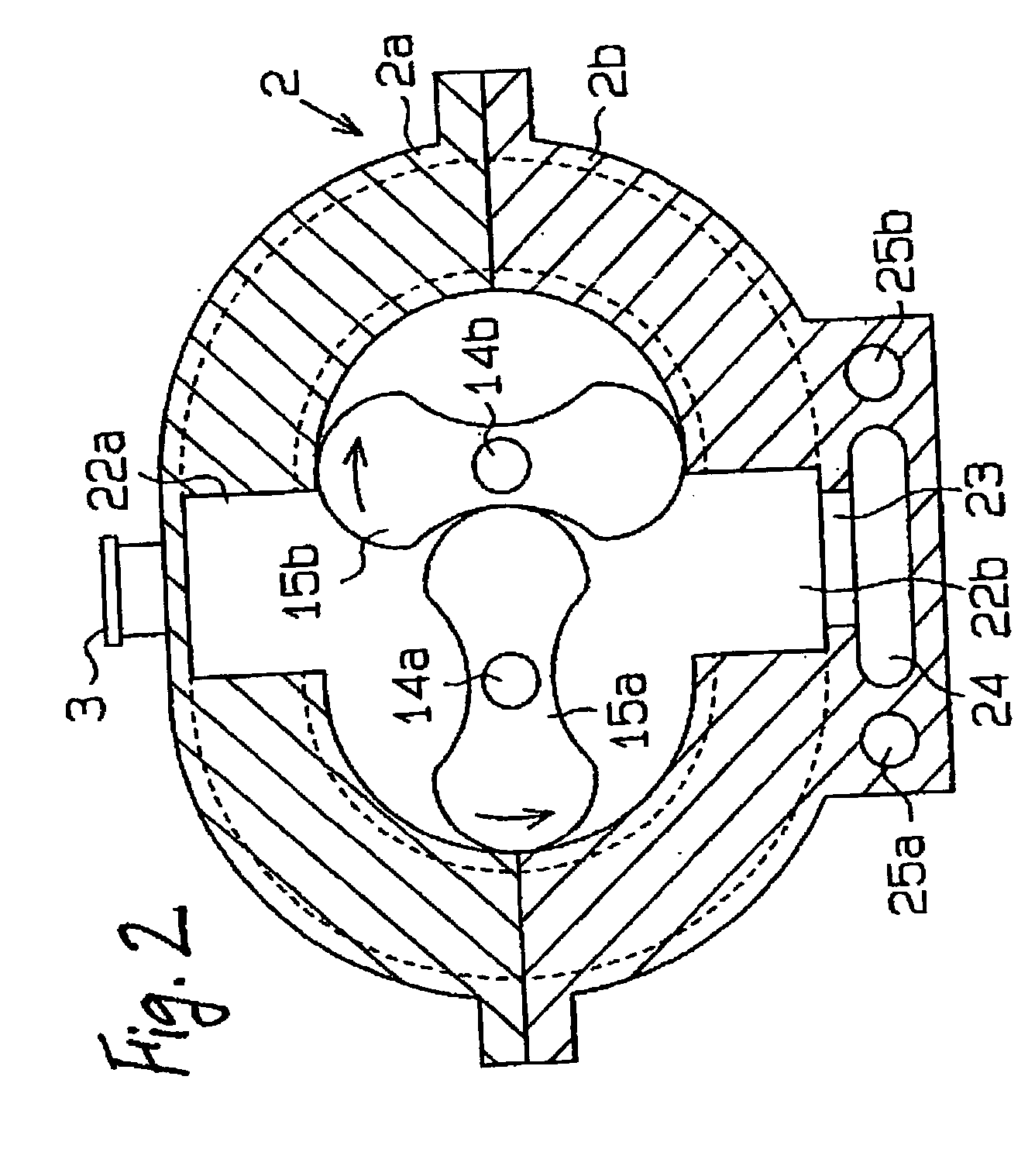Multi-stage vacuum pump
a vacuum pump and multi-stage technology, applied in the direction of positive displacement liquid engines, piston pumps, liquid fuel engines, etc., can solve the problems of pump overload, large temperature differential between them, and increase the temperature of the housing of multi-stage vacuum pumps
- Summary
- Abstract
- Description
- Claims
- Application Information
AI Technical Summary
Benefits of technology
Problems solved by technology
Method used
Image
Examples
first embodiment
[0040] [First Embodiment]
[0041] Referring first to FIGS. 1 and 2, there is illustrated a "Roots"-type multi-stage vacuum pump 1 which will be called simply pump. FIG. 1 illustrates an inner structure of the pump 1 and FIG. 2 is a cross-sectional view taken along line A-A in FIG. 1. The pump 1 includes complementary housing members 2a and 2b which constitute a housing 2, a pair of side covers 28 and 29 which are coupled to opposite ends of the housing 2, an electric motor 20 secured to the side cover 28, and an oil cover 39 secured to the side cover 29.
[0042] At a central portion inside the housing 2, as depicted in FIG. 2, there are provided a pair of paralelly arranged shafts 14a and 14b which extend along an axial direction of the housing 2. The housing member 2a is formed at its upper side thereof with an integral inlet port 3. The inlet port 3 is in fluid communication with a space (not shown) to suck a gas stored therein for establishing an evacuated state of the space. The inl...
second embodiment
[0067] [Second Embodiment]
[0068] Referring to FIG. 4, there is illustrated a "Roots"-type multi-stage vacuum pump in accordance with a second embodiment of the present invention. This pump according to the second embodiment is identical with the pump 1 according to the first embodiment except that other than a passage 24a additional passages 24R and 24L are provided which are formed in housing members 2aa and 2ba for surrounding each pumping chamber, respectively. Thus, each pumping chamber is of much wider heat transmission area to which heat is applied from gas passing through the passages 24a, 24R, and 24L.
[0069] In detail as shown in FIG. 4, the passages 24R and 24L are formed in the respective housing members 2aa and 2ba. The passages 24R and 24L are of an arc-shaped cross-section so as to run along the outer profile of each of the pumping chambers 9, 10, 11, 12, and 13. Thus, the high-temperature gas due to heat of compression which passes through the passages 24a and the arc-...
third embodiment
[0070] [Third Embodiment]
[0071] Referring to FIG. 4, there is illustrated a "Roots"-type multi-stage vacuum pump in accordance with a third embodiment of the present invention. This pump according to the third embodiment is identical with the pump 1 according to the first embodiment except that the cooling passages 25a and 25b are inserted therein with corrosion-free tubes 35a and 35b, respectively, for the prevention of possible corrosion of the housing member 2bb.
[0072] In other words, the FIG. 3--illustrated structure according to the third embodiment of the present invention is constructed or configured by modifying the FIG. 2--illustrated structure such that the inserted corrosion-free tubes 35a and 35b are in thermal engagement with the respective cooling passages 25a and 25b by casting, brazing, or other suitable manner. The corrosions tubes 35a and 35b make surely the housing member 2b free from corrosion at the cooling passages 25a and 25b through which the cooling fluid pa...
PUM
 Login to View More
Login to View More Abstract
Description
Claims
Application Information
 Login to View More
Login to View More - R&D
- Intellectual Property
- Life Sciences
- Materials
- Tech Scout
- Unparalleled Data Quality
- Higher Quality Content
- 60% Fewer Hallucinations
Browse by: Latest US Patents, China's latest patents, Technical Efficacy Thesaurus, Application Domain, Technology Topic, Popular Technical Reports.
© 2025 PatSnap. All rights reserved.Legal|Privacy policy|Modern Slavery Act Transparency Statement|Sitemap|About US| Contact US: help@patsnap.com



